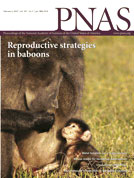
德国最新研究发现,脱氧核糖核酸(DNA)的两种酶会互相争夺对基因表达的“控制权”,这种争夺会导致DNA上的基因编码读取出错,从而引发相关疾病。
德国杜伊斯堡-埃森大学日前发表公报说,该校研究人员发现名为Sir2的酶和名为Rpd3的酶会互相争夺对基因表达的“控制权”。当其中一种酶过度活跃,另一种酶的作用则会减弱,造成基因表达失去平衡,DNA上的基因编码读取出现错误,从而引发相关疾病。
研究人员表示,将进一步研究这两种酶相互作用的具体机理,以便有助于研究由此引发的相关疾病。
这一成果发表在最新一期美国《国家科学院学报》上。(生物谷Bioon.com)
生物谷推荐原始出处:
PNAS January 19, 2010, doi: 10.1073/pnas.0909169107
Rpd3-dependent boundary formation at telomeres by removal of Sir2 substrate
Stefan Ehrentrauta, Jan M. Webera, J. Nikolaj Dybowskib, Daniel Hoffmannb, and Ann E. Ehrenhofer-Murraya,1
a Abteilung für Genetik and
bAbteilung für Bioinformatik, Zentrum für Medizinische Biotechnologie (ZMB), Universit?t Duisburg-Essen, D- 45117 Essen, Germany
Boundaries between euchromatic and heterochromatic regions until now have been associated with chromatin-opening activities. Here, we identified an unexpected role for histone deacetylation in this process. Significantly, the histone deacetylase (HDAC) Rpd3 was necessary for boundary formation in Saccharomyces cerevisiae. rpd3? led to silent information regulator (SIR) spreading and repression of subtelomeric genes. In the absence of a known boundary factor, the histone acetyltransferase complex SAS-I, rpd3? caused inappropriate SIR spreading that was lethal to yeast cells. Notably, Rpd3 was capable of creating a boundary when targeted to heterochromatin. Our data suggest a mechanism for boundary formation whereby histone deacetylation by Rpd3 removes the substrate for the HDAC Sir2, so that Sir2 no longer can produce O-acetyl-ADP ribose (OAADPR) by consumption of NAD+ in the deacetylation reaction. In essence, OAADPR therefore is unavailable for binding to Sir3, preventing SIR propagation.







